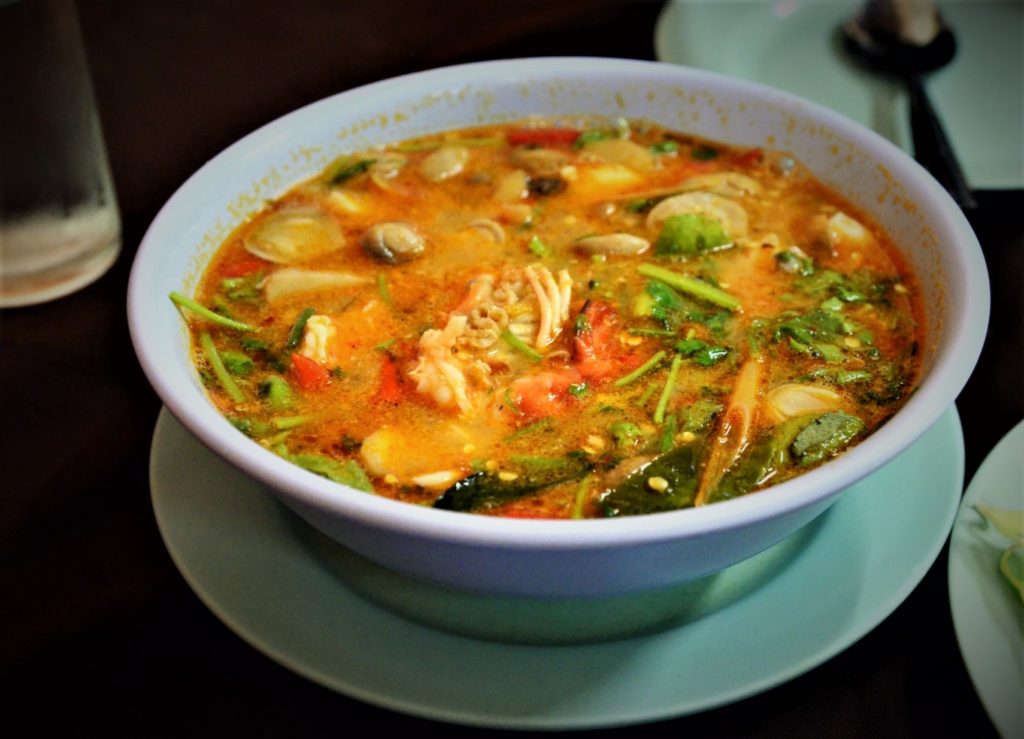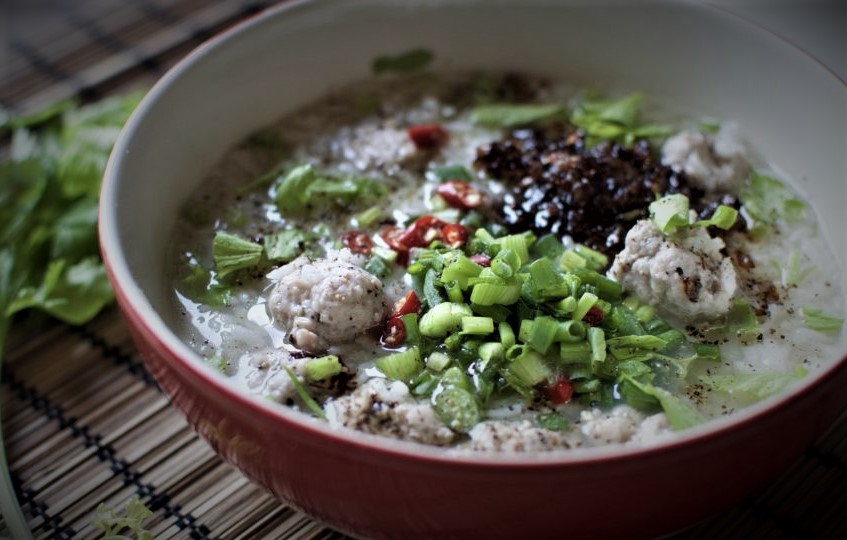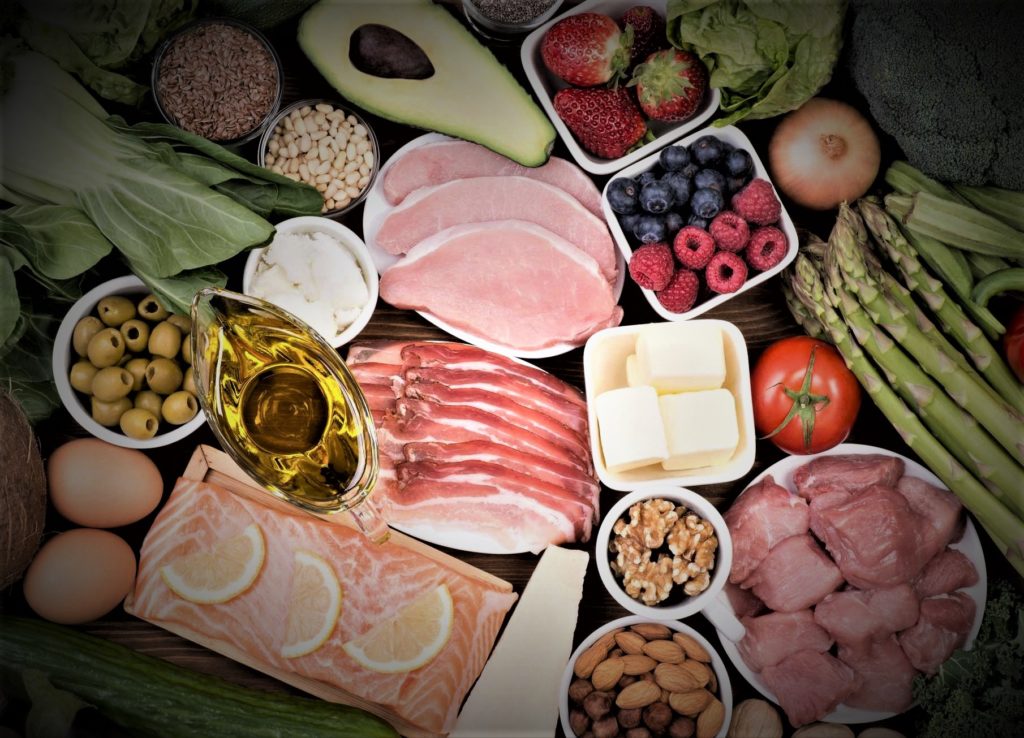Inilah 8 Makanan Khas Thailand yang Wajib Dicoba
Thailand menjadi salah satu negara di Asia yang banyak diminati para wisawatan untuk liburan. Negara ini tak hanya menawarkan beragam destinasi wisata menarik terutama pemandangan alamnya yang indah, melainkan juga kaya dengan ragam kulinernya yang lezat dan menggugah selera. Tak heran saat berlibur ke Thailand, para wisatawan pun tak ingin melewatkan kesempatan untuk berburu berbagai kuliner khasnya. Berikut ini adalah 8 makanan khas Thailand yang tak boleh dilewatkan untuk dicoba selama berlibur ke Negeri Gajah Putih.
1. Menikmati Lezatnya Tom Yam Sup Khas Thailand

Sup khas dari Negeri Gajah Putih ini memang sangat populer dan telah mendunia. Tak heran bila makanan khas Thailand tersebut selalu jadi buruan para pelancong yang sedang menghabiskan waktu berlibur ke sana. Sajian kuliner Tom Yam sendiri tersaji dengan berbagai bahan seperti Tom Yam Goong berisi udang, Tom Yam Pla yang berisi ikan, ataupun Tom Yam Po Taek dengan isian aneka seafood. Tom Yam asli Thailand memiliki rasa yang cenderung pedas sehingga buat yang tak terlalu menyukai makanan pedas bisa menanyakan tingkat kepedasan saat hendak menikmati sajian makanan khas yang satu ini.
2. Phad Thai, Kwetiau Unik Asal Negeri Gajah Putih
Buat yang hobi berburu kuliner dengan bahan mie sebaiknya tak melewatkan untuk mencoba sajian Phad Thai. Sajian makanan khas Thailand yang satu ini memiliki bentuk mirip dengan kwetiau yang pertama kali diperkenalkan pada masa kerajaan Ayutthaya. Menemukan makanan khas Thailand yang satu ini ternyata bukan hal yang sulit dilakukan karena mulai warung kaki lima hingga restoran di negara tersebut banyak yang menyajikan menu sajian mie tersebut.
Baca Juga : Time to dish up a Yorkshire food strategy
3. Jangan Lewatkan untuk Mencicipi Som Tam
Biasanya, sajian makanan khas Thailand ini disajikan sebagai pengganti makanan berat. Som Tam sendiri merupakan makanan yang terbuat dari pepaya muda serta bumbu yang terdiri dari bawang putih, cabai, tomat, saus ikan, serta jeruk nipis sehingga menghasilkan citarasa manis, pedas, serta asin gurih yang nikmat. Salad yang segar dan nikmat tersebut ternyata juga masuk dalam daftar 50 Makanan Paling Lezat di Dunia oleh CNN Go makanya jangan sampai melewatkan untuk menikmati sajian tersebut bersama teman dan keluarga saat liburan ke Thailand.
4. Mango Sticky Rice Hidangan Penutup yang Unik
Popularitas sajian makanan khas Thailand yang satu ini memang sudah banyak diakui. Bahkan, saat ini sudah banyak restoran Thailand yang menawarkan menu ini sebagai salah satu hidangan penutup yang cukup digemari. Hidangan ini terdiri atas ketan, potongan mangga, serta kuah santan. Kombinasi makanan ini terasa cukup unik bahkan aneh bagi orang Indonesia yang baru pertama kali mencobanya.
5. Nasi Goreng Khao Pad Asli Thailand
Ini merupakan nasi gorang asli Thailand yang biasanya memiliki citarasa tidak pedas sehingga cukup banyak diminati para wisawatan terutama yang tak hobi dengan kuliner pedas. Beberapa variasi dari olahan kuliner yang satu ini menggunakan potongan ayam, kepiting, udang, bahkan daging babi.
6. Khao Tom Sajian Bubur Khas Thailand yang Lezat

Bila di Indonesia keberadaan bubur ayam begitu populer, ternyata Thailand juga memiliki sajian bubur yang tak kalah lezatnya bernama Khao Tom. Sajian bubur ini dimasak dengan daging ataupun aneka seafood. Ada beberapa variasi Khao Tom yang bisa dipilih para pemburu kuliner khas Thailand seperti Khao Tom Moo yang berisi potongan daging babi, Khao Tom Goong yang dicampur dengan udang segar, ataupun Khao Tom Pla yang disajikan dengan campuran daging ikan.
7. Gai Yang Makanan Khas Thailand untuk Rame-Rame
Ini merupakan salah satu sajian makanan khas Thailand yang bisa dinikmati bersama-sama karena hidangan ini berupa ayam bakar utuh. Proses memasak hidangan yang satu ini dimulai dengan membalurkan bumbu pada ayam secara menyeluruh sebelum membakarnya. Untuk memudahkan dalam menikmatinya, ayam bakar biasanya dipotong-potong secara kasar.
8. Khaeng Phet
Kari Merah dengan Rasa Pedas Satu lagi sajian makanan khas Thailand yang wajib dicoba terutama bagi para pecinta kuliner pedas. Masakan khas Negeri Gajah Putih ini menggunakan bahan utama daging sapi, ayam, ataupun babi yang diolah bersama santan serta bumbu kari dan cabai merah. Ini merupakan salah satu menu masakan Thailand yang cukup diminati bukan hanya oleh masyarakat lokal tetapi juga para wisawatan asing.




